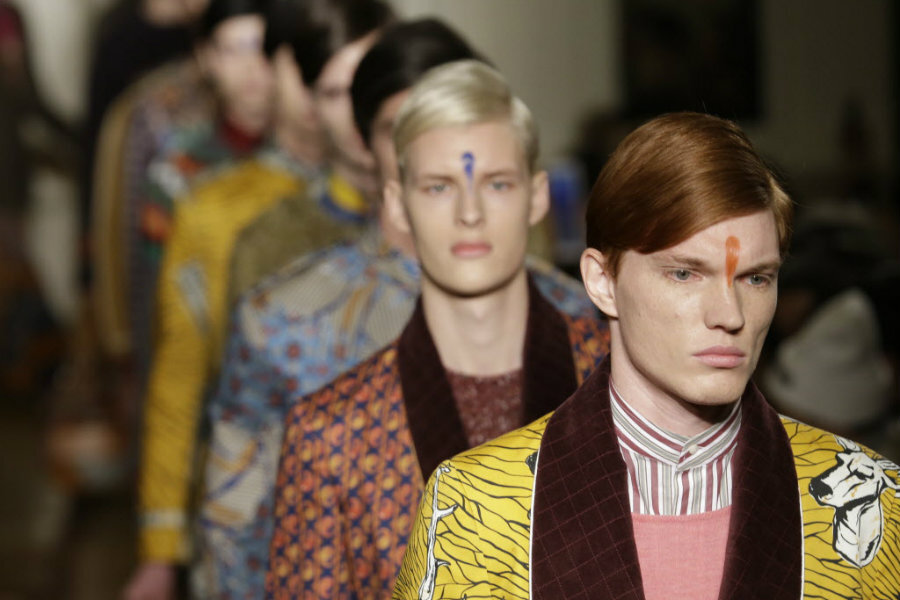Selfridges goes gender neutral: Rise of androgynous clothing?
Loading...
Unisex clothing is all the rage.
At least, that’s what high-end British department store Selfridges would have customers believe as it launches what it calls “Agender” – a shopping space that blurs gender lines.
Beginning mid-March, the retailer’s flagship store on London’s Oxford Street will be replacing its men’s and women’s departments with three floors of unisex clothing, revamped beauty and fashion accessories, and non gender-specific displays (meaning no male and female mannequins).
The project will also extend to Selfridge’s Manchester and Birmingham stores and to its website, according to Women’s Wear Daily.
“We will explore the relationship between gender and retail physically, digitally and in all of our stores,” Selfridges creative director Linda Hewson told market data magazine Retail Week.
“The project will act as a test bed for experimentation around ideas of gender – both to allow our shoppers to approach the experience without preconceptions and for us as retailers to move the way we shop for fashion forward,” Ms. Hewson said.
The idea of unisex clothing in modern fashion has been around since at least the 1970s, popularized by such icons as musician David Bowie and his eclectic outfits, and Diane Keaton’s shirt-and-tie ensembles in the film “Annie Hall.” Androgynous clothing have regularly graced runways ever since – and the latest trends are no exception.
Gender-neutral fashion as a concept store isn’t new, either: London designer Sara Weston has been marketing her unisex clothes since 2013 through her brand Eastie Empire, and Canadian Natalia Manzocco began selling clothing and accessories designed for both sexes at her online store Future is the Future last year.
Los Angeles-based stylist Sara Medd is also set to launch Greyscale Goods, an online store that scours the world for unisex brands that customers can choose from based on their individual styles.
But as with any idea that’s trying to transform itself from merely a trend to a true cultural shift, this one has its problems. One issue for ready-to-wear retailers, for instance, is sizing. At Future is the Future, Ms. Manzocco addresses the difference in male and female body types by providing full measurements along with the traditional size labels for each piece she sells, hoping that customers will find androgynous outfits that will work for their bodies.
Also, while menswear has increasingly become mainstream for women – boyfriend jeans and the dinner jacket have long since left the runway for the sidewalk – the opposite has not quite picked up.
“Playing with colourful socks, bow ties and pocket squares can be seen as stepping outside the box of masculinity, so for men to be more outside of that box and wear floral shirts, skirts or heels, that could be seen as jeopardizing their masculinity even more,” Ben Barry, fashion professor at Toronto’s Ryerson University, told the Toronto Star.
Still, celebrities such as Pharrell Williams, Kanye West, and Jared Leto have led the way in womenswear for men, donning everything from tunics to button-downs to espadrilles made for women.
“Androgynous clothing is nearly there,” Greyscale Goods’ Ms. Medd told the Star. “It’s the next step.”








